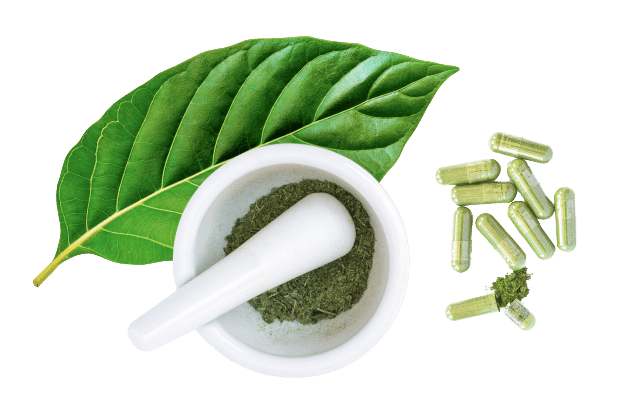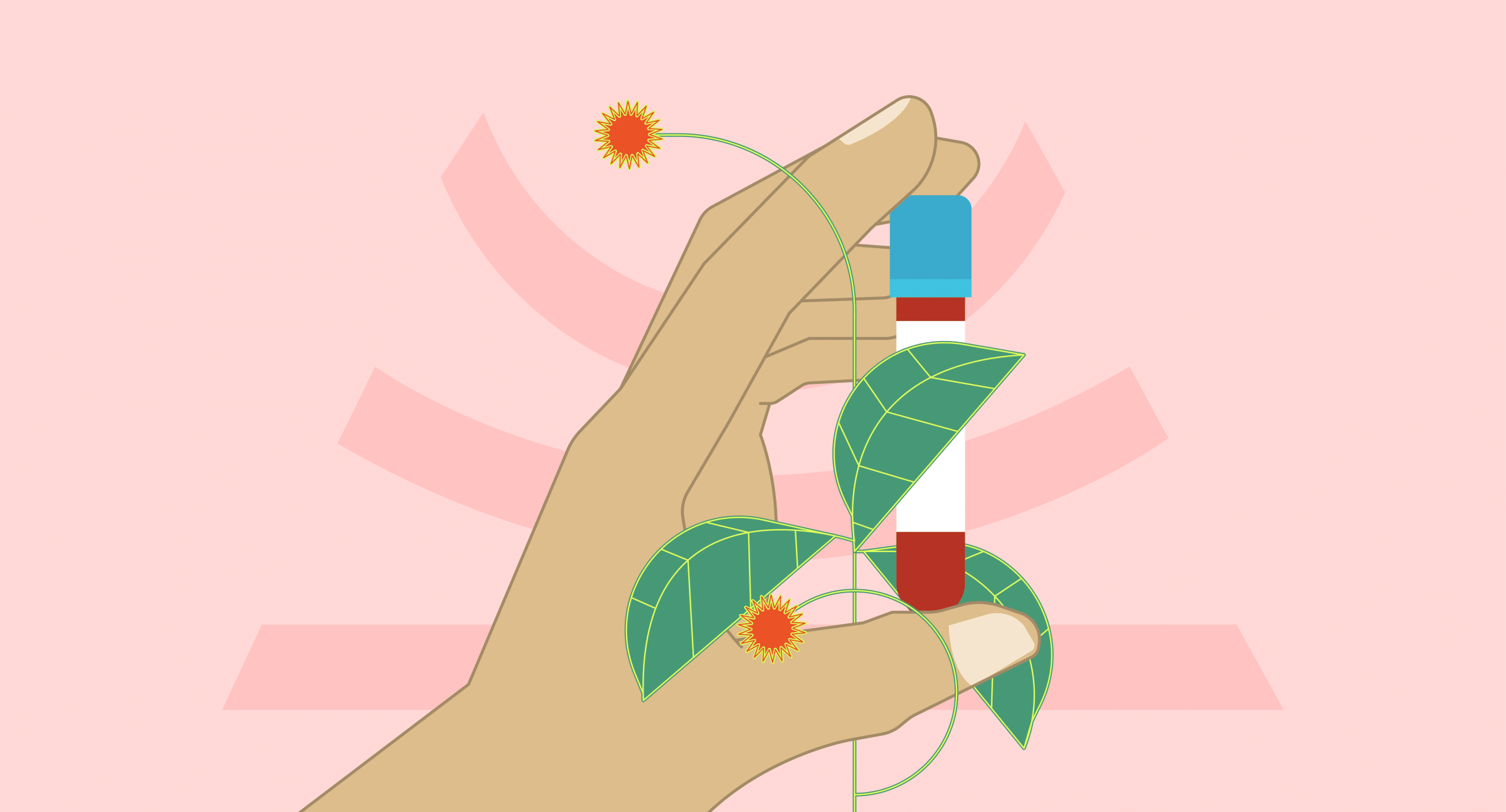How Long Do the Effects of Kratom Last?
The kratom plant has many uses and acts as a pain reliever, sedative, shot of energy, and mood booster. The effects depend on the amount you take and the strain you use.
Once you consume kratom, you can expect to start feeling the effects in about 15 to 30 minutes. They tend to peak at around an hour after consumption once it has moved through your digestive system.
The effects slowly fade after the one-hour mark and should be totally gone by about three or four hours after consumption. Some strains are known to last longer and can provide noticeable effects for five to six hours.
Additionally, larger doses tend to take longer to be metabolized fully and might lead to longer-lasting effects.
How Long Does Kratom Remain in Your Body?
Despite kratom’s effects fading after just a few hours, it takes significantly longer for it to leave your body entirely. In most cases, the compounds stay in your system for up to a day.
The two primary alkaloids in kratom — mitragynine and 7-hydroxymitragynine — have a half-life of around two to three hours [1].
This means that approximately half of the readily available alkaloids are metabolized in the first three hours, which is when the noticeable effects begin to fade. It can take up to 24 hours for all traces of the alkaloids to be processed and eliminated.
Will Kratom Show Up On a Drug Test?
A false positive is rare but possible; however, kratom does not show up on most drug tests. Even if it does, it might not be an issue because kratom is legal and unregulated in most areas.
However, kratom metabolites — or the intermediary compounds created between the beginning and end of its metabolism — can produce false positives [2]. This seems to be a rare occurrence, though.
More advanced tests, like 10-panel drug tests, could potentially confirm kratom use, but detection by these tests is unlikely. Some drug tests are created to test for kratom alkaloids and metabolites. Still, these are very rare and are unlikely to be issued by employers, mainly because kratom is widely legal.
How Long Can Kratom Show Up On a Drug Test?
Kratom and its metabolites can be detected in the body for about seven days. However, most standard drug tests won’t confirm kratom use at all.

What Are the Effects of Kratom?
Kratom contains a variety of alkaloids, each with a different impact on the body. The exact effects you’ll feel will depend on the dose and the type of strain you consume.
The most commonly reported effects of kratom include [3,4]:
- Pain relief
- Improved energy levels
- Increased physical performance
- Mild to intense sedation
- Improved sleep quality
- Improved focus
- Anxiety relief
- Uplifted mood
- Euphoria
- A warm sensation throughout the body
- Slight changes to visual perception, and
- An increase in sexual arousal
These effects vary from user to user to some extent, but one of the most significant factors when it comes to the impact you can expect is the dose.
How Does the Dose Change Kratom’s Effects?
Generally speaking, lower doses of kratom (between 2 and 6 g of dried powder) result in stimulative and nootropic effects. Most users compare the stimulation to drinking several cups of coffee without the anxious feelings and jitteriness that caffeine often does.
Larger doses between 7 and 12 g tend to elicit a more sedative feeling. Many people report intense muscle relaxation, falling asleep faster, better sleep quality, and an overall sense of calmness.
Larger doses above the 7 g mark provide better pain relief and mimic opioids.
Suggested Reading: Kratom Dosage Guide
How Strain Changes Kratom’s Effects
In addition to dose size, the strain you choose will often impact the effects you feel. There are three primary types of kratom: white-vein, green-vein, and red-vein varieties. The color depends on when the leaves are harvested, determining the ratio of psychoactive alkaloids contained within the powder.
White-vein kratom is a better option for stimulation and increased mental performance. Most users take these strains in smaller doses for powerful stimulation and an energy boost, and they are also most closely associated with euphoria.
Green-vein kratom is usually harvested at peak ripeness when the leaves of the kratom tree have a deep green color. Green-vein kratom is often referred to as a hybrid kratom color, as it is known to provide some of the effects of white-vein kratom and some red-vein strains.
Red-vein kratom is the most popular for pain relief and sedation, so users tend to take red kratom in larger doses over 6 g. Red-vein kratom is harvested late in the plant’s maturity when the leaves have started to darken and take on a reddish hue.

Wrapping Up: How Long Does Kratom Last?
Kratom comes from a tree grown in Southeast Asia and has long been used in traditional medicine for its many reported effects.
Depending on the dose, most users note pain relief, euphoria, sedation, stimulation, and nootropic effects. Many other effects have also been reported, including increased physical performance, changes to visual perception, and improved mood.
You can expect the effects of most kratom doses and strains to kick in within 15 to 30 minutes, peak around an hour, and fade after about three to four hours.
Kratom’s alkaloids are generally fully metabolized within 24 hours. Most drug tests won’t detect kratom, although some kratom-specific tests can potentially confirm kratom use for up to seven days.
- Meireles, V., Rosado, T., Barroso, M., Soares, S., Gonçalves, J., Luís, Â., … & Gallardo, E. (2019). Mitragyna speciosa: clinical, toxicological aspects and analysis in biological and non-biological samples. Medicines, 6(1), 35.
- Pierre, C., Gineste, C., & Bazydlo, L. (2020). A Kratom Metabolite Causes False Positive Urine Drug Screening Results for Methadone. American Journal of Clinical Pathology, 154, S19-S20.
- Veltri, C., & Grundmann, O. (2019). Current perspectives on the impact of Kratom use. Substance abuse and rehabilitation, 10, 23.
- Singh, D., Narayanan, S., Grundmann, O., Dzulkapli, E. B., & Vicknasingam, B. (2019). Effects of kratom (Mitragyna speciosa Korth.) use in regular users. Substance use & misuse, 54(14), 2284-2289.









